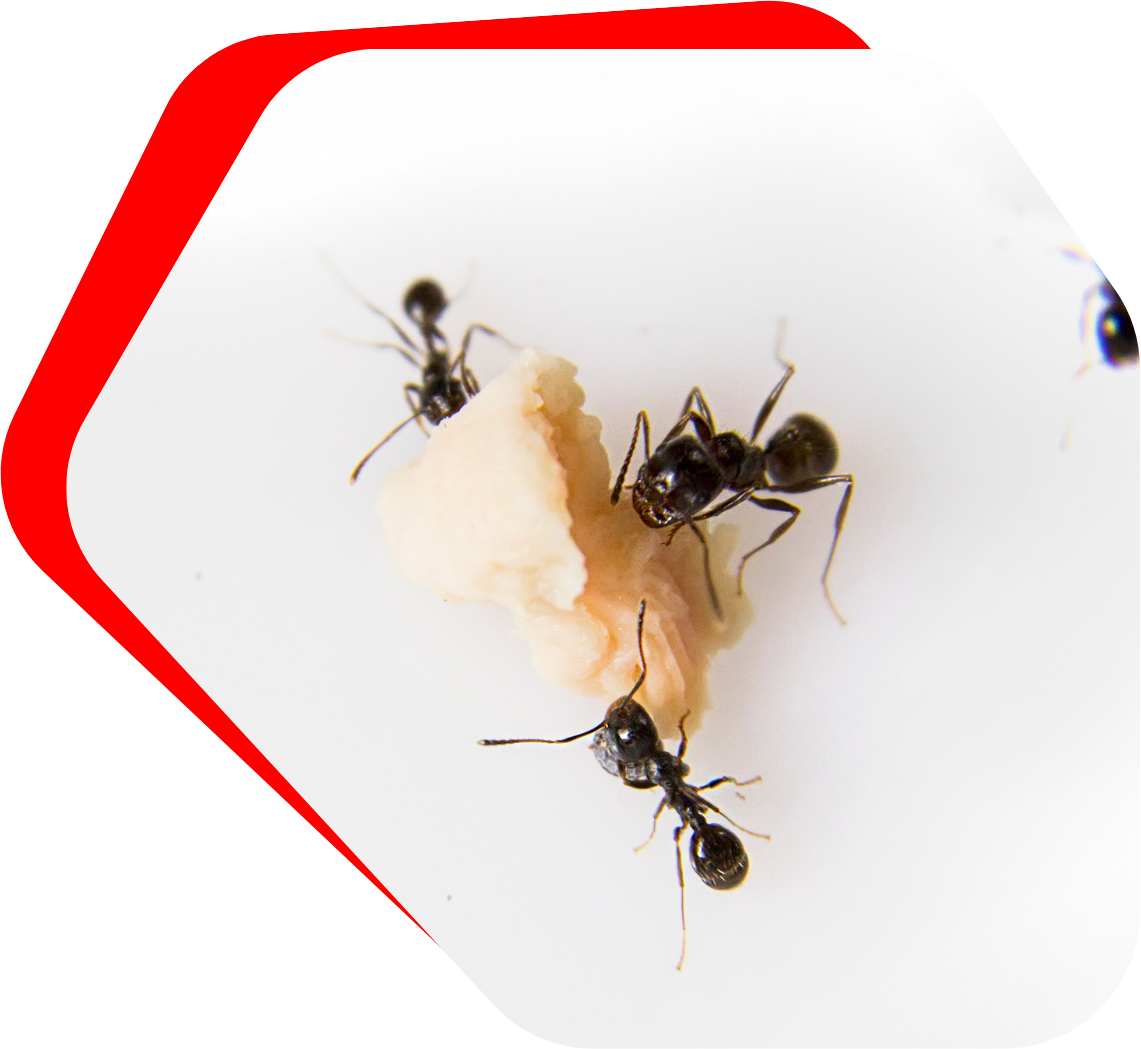For many, the experience of spotting an ant trail across their kitchen floor or seeing a swarm of these tiny creatures overtaking their picnic is all too familiar. At Rosenbloom Pest Control, we understand the intricacies, habits, and potential threats of these miniature invaders.
Baltimore's climate and environment are conducive to several species, each with its unique characteristics. Among the most common are:
Carpenter Ants: Notably larger than their counterparts, they are known for burrowing into damp wood, often causing structural damage to homes. They do not consume wood, like termites do, but rather hollow it out to establish their colonies.
Odorous House: They emit a rotten coconut-like smell when crushed, hence their name. Attracted to sugary substances, they frequently invade kitchens and pantries.
Pavement: Often spotted around sidewalks or driveways, they nest under stones, along curbs, or in cracks. They can enter homes through tiny gaps, searching for food.
While these ants vary in size, appearance, and preferred habitat, they all share one thing in common: given the chance, they will infiltrate your home, seeking food and shelter.
Beyond the obvious nuisance, they present several challenges to homeowners. Carpenters, for example, can undermine the integrity of wooden structures, potentially causing thousands of dollars in repair costs. Moreover, they are adept at finding the smallest crumbs, contaminating food sources, and making meal preparation a frustrating chore. Additionally, some individuals may also have allergic reactions to bites or stings. And while most found in Baltimore are not venomous, their bites can cause itching, swelling, and discomfort.
As ubiquitous as they might seem, ants are far from simple creatures. Here are some lesser-known tidbits about these industrious insects:
- Super Strength: They can carry objects up to 50 times their body weight. It's akin to a human lifting a car!
- Lifespan: While workers may live for several months, queens can live for years, ensuring the longevity of their colony.
- Communication: They don't communicate through sounds or sights. Instead, they utilize pheromones to convey messages and give directions to their fellow ants.
- Numbers: A colony can range from a few hundred to millions of members, all synchronized in their tasks of foraging, defending, and tending to the young.
After spotting an ant problem, homeowners may be tempted to handle it themselves. From store-bought sprays to homemade concoctions, the DIY approach often seems appealing. However, these methods are typically short-term fixes, addressing only the visible ones and not the hidden colony. Boiling water, vinegar, and chalk lines might deter them temporarily, but they do little to eliminate the root problem: the queen and her vast underground network. Furthermore, store-bought chemicals can be harmful to pets and children, and if used improperly, might exacerbate the infestation. The truth is, without understanding the intricate life cycle, behaviors, and nesting habits, most DIY solutions only scratch the surface. This can lead to recurrent invasions, endless frustrations, and wasted resources.
In the battle against ants, professional intervention is not just an option—it's a necessity. At Rosenbloom Pest Control, our expertise in dealing with the Baltimore area's species ensures a comprehensive approach. We don’t just target the foragers; we aim for the complete eradication of the colony, offering you peace of mind and a lasting solution. So, before you spend another minute worrying, or waste resources on ineffective DIY remedies, trust Rosenbloom Pest Control. With our knowledge, techniques, and commitment, we will reclaim your home from these persistent invaders.
Frequently Asked Ant Questions
Q1: I've heard that ants can "predict" rain. Is this true, and how do they do it?
A1: Ants seem to become more active or behave differently before it rains. Scientifically speaking, they don't "predict" rain in the way humans do by watching weather forecasts. Instead, they are highly sensitive to changes in their environment. The humidity levels rise before a rainfall, and this change in moisture might trigger them to prepare their nests for potential flooding. They may either seal off their nest entrances or engage in heightened foraging activity to gather resources in anticipation of the weather change. While it's not a foolproof rain predictor, observing ant behavior can indeed give some insights into imminent weather changes.
Q2: I discovered a large group of winged ants in my home. Does this mean my house is infested?
A2: Discovering alates or swarmers can be alarming. These are the reproductive members of the colony that take flight to mate and establish new colonies. Seeing them indoors might suggest that there's a mature colony within or very close to your home. While a single winged ant could have wandered in accidentally, a group usually indicates that a nest might be nearby. It’s crucial to identify the species, as carpenters, for example, can cause structural damage. If you notice these swarmers, it’s wise to seek professional assessment to determine the source and implement control measures.
Q3: Why do they suddenly appear in large numbers, and then, just as suddenly, vanish?
A3: The seemingly spontaneous appearance and disappearance can be perplexing. Several factors drive this behavior. One is the availability of food. If they discover a reliable food source, like a spilled sugary drink or crumbs, they will communicate with their colony members using pheromones, leading to an influx to that location. Once the food is exhausted, or if they perceive a threat, the pheromone trail is no longer reinforced, and ants might seem to "vanish." Seasonal changes can also influence their activity. During colder months or periods of heavy rain, they might seek refuge indoors only to return outside when conditions are more favorable. It's essential to remember that even if you don’t see them, they could be close by, waiting for the right conditions or cues to return.

